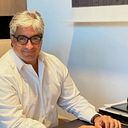The Bourbon Business Boom
Global bourbon sales are on the rise annually. Over $600 million in bourbon is now exported and sold around the world each year. In the last decade, the number of bourbon distillers has grown by over 250%.
Bourbon today represents almost 9% of the total volume of spirits sold in the U.S., with a sales growth rate of over 11% (making it the third fastest growing spirit).
And over $2.3 billion in new capital investment and projects in the bourbon industry, including distilleries, bottling facilities and warehouses, are projected to be completed in the next year.
Indeed, in just the last month, one of the fastest growing bourbon distillers announced the formation of a new $50 million fund to invest in minority-owned spirits brands. Another prominent bourbon distiller in Kentucky opened a $19 million center to encourage bourbon tourism. And the oldest estimated bottle of bourbon (dating to the Revolutionary War period) is being auctioned, with an estimated sales price of between $20,000 — $40,000.
Even celebrity sports figures are joining the bourbon game. NBA legend Scottie Pippen announced this month that he is launching his own 92-proof branded bourbon, DIGITS bourbon, to be distributed initially for the Chicago market.
Seems like everyone lately is talking about and drinking bourbon. For the uninitiated, the issue typically revolves around what is bourbon (and how does it differ from whiskey). And for those who know their bourbons by the maker and batch, the issue revolves around the more subjective question of: what is the best bourbon on the market? So let me pour my thoughts into this discussion.
What is bourbon?
Bourbon is a type of American whiskey distilled from a mash (grain mixture) made up of at least 51% corn (most distillers use about 70% corn). The mash must be distilled at 160 proof or less and then stored in new charred oak barrels at 125 proof or less. Bourbon also must be bottled at 80 proof or greater and cannot contain any added flavorings or color additives unless labeled as “blended bourbon.” Bourbon can be made anywhere inside (but not outside) the U.S. to qualify and be labeled and sold as bourbon.
As with American “straight whiskey,” “straight bourbon” must be aged a minimum of two years in the barrel before bottling. Although U.S. federal standards generally do not specify a minimum aging requirement for bourbon, bourbon that has been aged less than four years in the barrel must specify the number of years aged on the label. In addition, for American bourbon to be labeled as whiskey under EU standards, the bourbon must be aged for at least three years in the barrel prior to bottling.
As for taste, bourbon profiles vary based on the quality of the mash, the time aged in the barrel, and the unique flavors attributable to the barrels used to age the distilled mash. Flavor profiles for bourbon vary and may include vanilla, oak, caramel, chocolate, nutmeg, cinnamon, oatmeal and others.
What is the Kentucky connection?
Approximately 95% of all bourbon is distilled and bottled in the Bluegrass State of Kentucky.
The reason is largely historical. In the 19th Century, Scottish, Irish and German settlers who arrived in the U.S. “went west” looking for land and opportunities. Many of them brought their stills and distilling knowledge with them and ended their journey in Kentucky. They soon learned that the Kentucky soil and climate was ideal for growing corn (the main ingredient in bourbon), and the Kentucky limestone deposits acted as a natural filter for the water needed in the distilling process.
From these origins, bourbon production has become a mainstay of the Kentucky economy. Bourbon is now estimated to be a $8.6 billion industry, generating over 20,000 jobs with an annual payroll of close to $1 billion. Popular bourbon distilleries, such as Maker’s Mark and Woodford Reserve, are so closely identified with Kentucky that they have been designated as National Historic Landmarks.
Currently there are at least 70 bourbon distilleries in Kentucky, and the number of barrels of bourbon aging is roughly double the state population. Kentucky is also home to an annual Bourbon Festival held each September. There is even a Kentucky Bourbon Trail that guides tourists from distillery to distillery.
What is the best bourbon on the market?
Multiple international award winner Pappy Van Winkle is generally recognized as among the best bourbons available. Despite its high price point (average price of $2,500 a bottle), the availability of this bourbon should not be assumed, however, due to its equally high demand. Indeed, bourbon aficionados have coined the phrase “Pappy hunting” to describe the challenging search for this sweet elixir.
Among the smaller batch bourbons, another multiple award winner (and my personal favorite) is Blanton’s, which has been in production since 1984 and is the world’s first single-barrel bourbon. Blanton’s (93 proof) is typically aged 6–8 years in the barrel and has a satisfying flavor profile featuring vanilla and hints of nutmeg and honey. In my view, after extensive personal testing, Blanton’s is best enjoyed “neat” or “on the rocks.”
That being said, there are many other recommended bourbons that make an excellent base for cocktails, from classics (such as the Old Fashioned, Manhattan and Mint Julep) to more modern drinks (such as the Bourbon Sidecar, Kentucky Coffee and the Expat). These cocktails are all worth doing an online search for their recipes and trying at home.
So pour yourself a glass and join the burgeoning bourbon business boom!
Danilo Diazgranados is an investor, collector, and lover of fine wines and a member of the prestigious Confrérie des Chevaliers du Tastevin, a fraternity of Burgundy wine enthusiasts.
